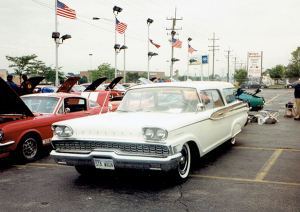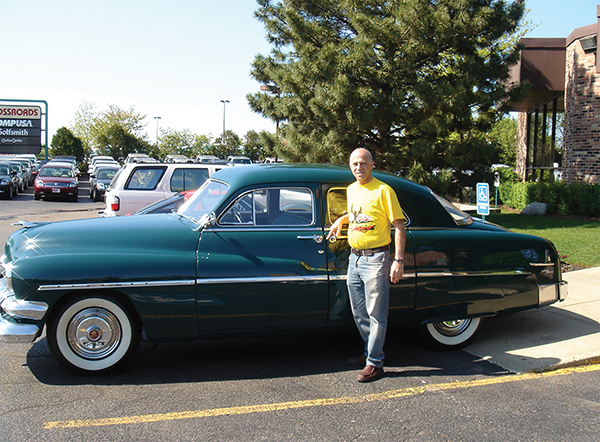IMOA president still presides over club he started in 1991
Jerry Robbin, president of the International Mercury Owners’ Association, is unique in that he still holds his title 25 years after founding the club in 1991.
“Our club is trying to keep the Mercury marquee alive, just like a museum,” he said. “Mercury had an identity crisis when it started and it still does. Many people aren’t even sure what a Mercury was. Once they got rid of standalone Lincoln and Mercury stores, Ford and Mercury cars just started to look similar and that was a killer.”
Jerry grew up in the Chicago area and it didn’t take long for his car interest to develop.
“My dad bought a new car every couple of years, always General Motors and Oldsmobiles,” he said. “I always loved looking at the new models at the Chicago Auto Show or at the local dealers.
The first collector car Jerry owned was 1959 Chevy Kingswood wagon he bought in 1986.
 This led to his buying a 1959 Mercury Commuter wagon from Carl Hilchen, who later was one of the charter members of the IMOA.
This led to his buying a 1959 Mercury Commuter wagon from Carl Hilchen, who later was one of the charter members of the IMOA.
“The first place I went looking for parts for the Commuter was at the Iola Car Show,” Jerry said. “I was asking around for Mercury parts and the vendors acted like I was a leper.”
He then thought to look for parts through clubs.
“I found that there were no national Mercury clubs,” he said. “There were some small ones, pocket clubs, here and there. I decided to find out why there wasn’t a national one.”
He contacted Chuck Snearly, who worked for Ford Motor Co., about forming a club.
“That led to Ford funding an ad in Hemmings Motor News asking if people were interested in joining a Mercury club,” Jerry said. “I sent out a first newsletter to people who responded to the Hemmings ad. After a year, we had a hundred members and there was steady growth after that.”
The IMOA’s peak year for membership was 2008, when there were 1,400 registered members.
The newsletter eventually morphed into Quicksilver magazine, funded by a membership fee, which provided essential information for members, such as classified ads.
“Many classic car owners are looking to buy or sell a car and parts,” Jerry said. “I looked at a membership fee as an investment to find these things. They also like to see pictures of theirs and other cars.”
Jerry even wrote articles for awhile.
“I wrote about ‘Fred the Wagon,’” he said. “It was written like the car was talking.”
Many charter members wrote for the club publication, including Jim Tweedy, Bill Moulton, Jim Wickel, Bill Arnold and John Harvey, the latter who still provides columns for each issue.
Other original members who had a great influence on the club were Carl Hilchen, Paul Melchart and Ernesto Romero.
The first annual IMOA show was in 1993 at the Gilmore Auto Museum in Hickory Corners, Mich. Through the years, members attending the annual show have driven their cars on the Indianapolis 500 race track, toured the South Dakota Badlands and the old frontier town of Deadwood, cruised through the Smokey Mountains, gone country in Branson, Mo., and celebrated Ford’s 100th Anniversary in Detroit.
“Everyone I meet at the national shows are such down-to-earth people,” Jerry said. “We have a great time together. The people are so important. The best thing about the club is the networking that is created.”
The club has a varied membership that have ranged from those with 100-plus collections to those who are still working on the restoration that they started 25 years ago.
The club is truly international, with members hailing from Sweden, Finland, Denmark, Great Britain, Australia, Argentina, Brazil, Canada, Germany, Greece, Iceland, Italy, Mexico, Norway, New Zealand and The Netherlands.
Like many clubs nowadays, there has been a tricky transition between having a club publication and an online presence,
The IMOA is currently juggling the past and present, still publishing Quicksilver as a magazine, but also having its www.mercuryclub.com Web site and a Facebook page.
Jerry is satisfied by what the club has accomplished through the years and what it means to members.
“The greatest thing is the camaraderie and meeting such great people,” he said. “I’ve been able to meet members in Switzerland and rode in their cars there. We have members in Finland, Denmark, Sweden, Great Britain and South America that we help out when they’re looking for parts or other information.”


